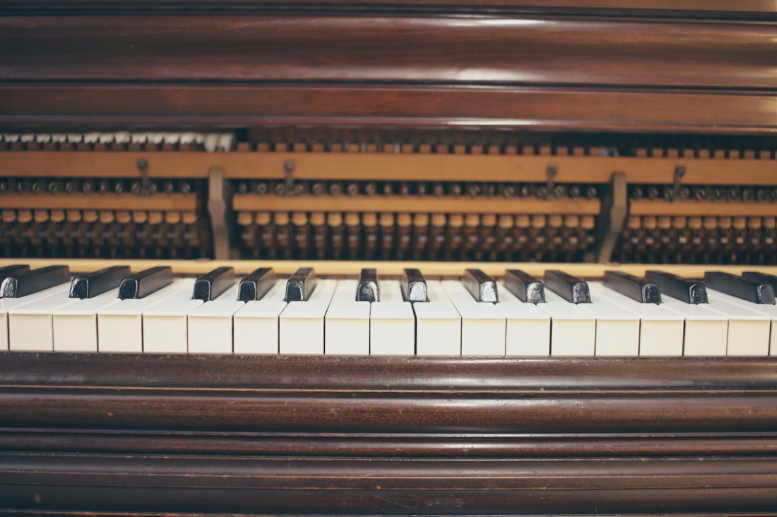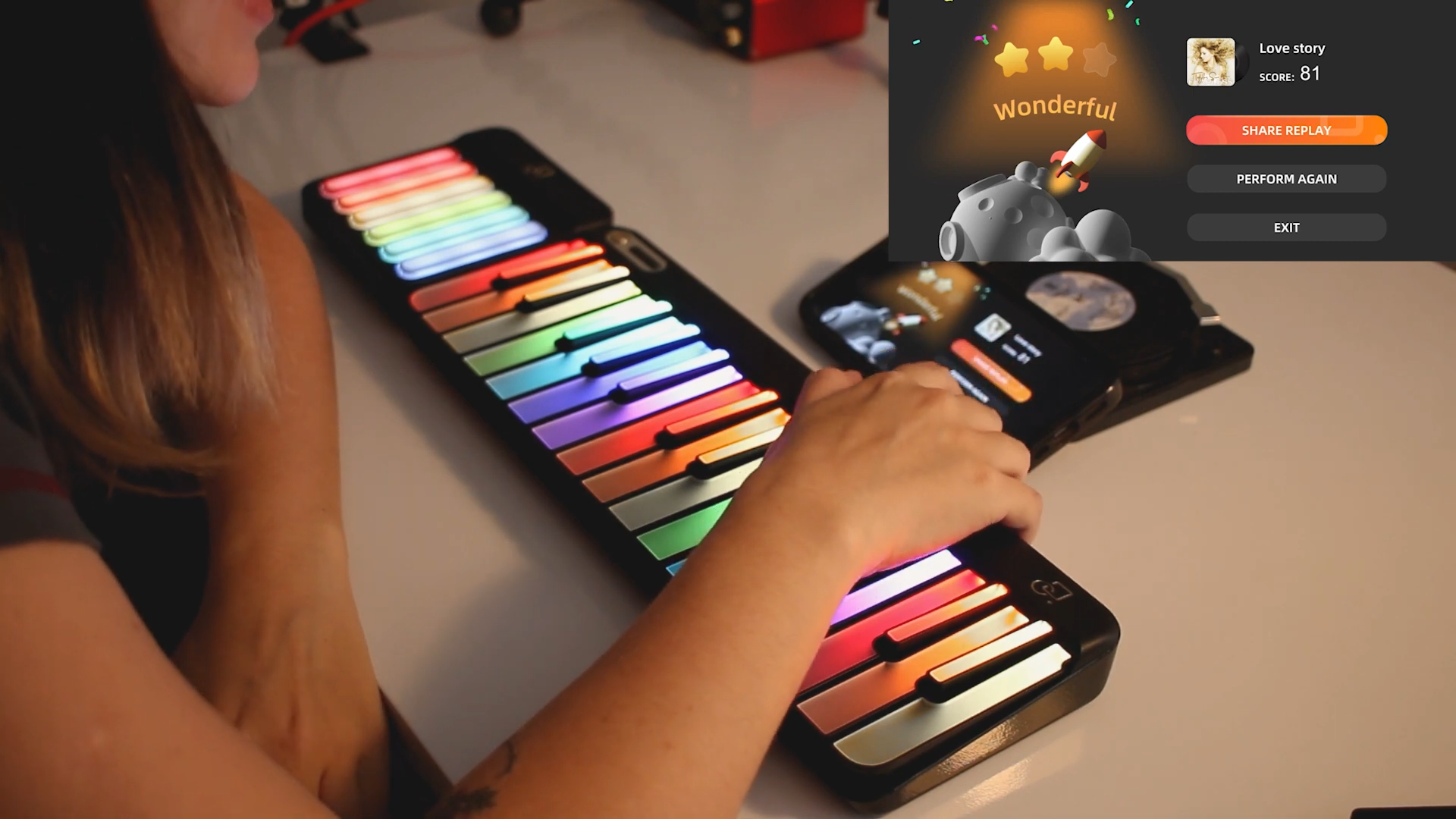
Light‑guided keyboards make the leap from “I wish I could play” to “Check out my song!” feel refreshingly short. Follow the glowing notes, add a headphone‑friendly practice session, and you’ll pick up proper finger placement before self‑doubt even shows up. Below you’ll find six beginner‑ready light up keyboard pianos each one tested against three must‑haves:
Whether you’re shopping for a first instrument or upgrading from a dusty toy keyboard, these models will keep learning fun, visual, and—honestly—pretty neat.
|
Pick |
Keys |
Best For |
Street Price* |
|
Yamaha EZ‑300 |
61, touch‑sensitive |
All‑round starter |
$300 |
|
Casio LK‑S450 |
61 |
Portable practice |
$279 |
|
PopuPiano Smart Keyboard |
29 (+24 expansion) |
Modular creativity |
$425 |
|
The ONE COLOR |
61 |
Budget + huge app library |
$149 |
|
ROLI Piano M |
24 mini |
Tiny hands, travelers |
$279 |
|
RockJam RJ640L‑XS |
61 |
Bargain bundle hunters |
$130 |
Yamaha’s EZ series has been the light‑up gateway drug for decades, and the latest EZ‑300 keeps the streak alive. You get 61 touch‑sensitive keys that glow only on the notes you should press, 202 built‑in songs, and a whopping 622 instrument voices, so practice never feels stale.
It needs AA batteries for busking, and the onboard speakers, while clear, won’t fill a big room. But for living‑room learners, it’s an easy yes.
Casio trimmed the girth, kept the glow. The LK‑S450 weighs under 10 lbs, slips into most backpacks, yet still delivers 61 full‑size, touch‑responsive keys with the Key Lighting system.
No Bluetooth out of the box; you’ll need Casio’s WU‑BT10 dongle if you want cable‑free MIDI.
Looking for something that’s part light‑up piano keyboard and part MIDI controller? PopuPiano’s 29‑key main board snaps to a 24‑key expansion or an RGB chord pad when you’re ready to level up. Every key lights your path inside the PopuMusic app, turning lessons into rhythm‑game fun.
It’s only 29 keys (53 with the extra board), so classical repertoire will feel cramped. But for chart hits, songwriting, and light‑guided play‑along, it’s a joy.
At barely 7.7 lbs and about the cost of a weekend getaway, The ONE COLOR packs a legit learning punch: red LEDs guide your fingers while the free app serves 4,000+ scores and video lessons.
Keys aren’t weighted, and built‑in speakers are modest. Pair it with decent headphones and you’re golden.

ROLI merged its former LUMI line into Piano M, giving us 24 RGB keys with per‑key pitch‑bend and poly‑aftertouch—yes, that’s fancy talk for expressive playing. The ROLI Learn app gamifies lessons with Cascade, Rainbow, and Classic note views while the keyboard glows accordingly.
Mini keys require a lighter touch. Adults with larger hands may need a brief acclimation period.
RockJam’s latest kit answers the “I want lights, a stand, and change left over for pizza” crowd. For roughly $130 you get a 61‑key lighted piano keyboard, X‑stand, music rest, power supply—and yes, the keys flash note by note through demo songs and three teaching modes.
Plastic chassis feels toy‑ish, and velocity sensitivity is basic. Still, for a first foray, it’s a steal.
Key Count & Size
Key Action
Learning Ecosystem
Portability Needs
Budget for Accessories
Nope. When paired with structured lessons, learning keyboard light up keys reinforce muscle memory and rhythm. You still need to practice, but visual cueing trims the early frustration phase.
Not if you also learn basic notation and ear training. Use the lights as training wheels—then wean off gradually by disabling the feature (easy on Yamaha EZ‑300 and Casio LK‑S450).
For pop, 61 is sweet‑spot. If you’re eyeing classical grade exams, shoot for 88 later. Remember: the best light up piano keyboard for beginners is the one you’ll play daily.
Any of the boards above offer a headphone jack. PopuPiano, ROLI Piano M, and The ONE COLOR are the most compact if storage is tight.
Absolutely. PopuPiano, ROLI Piano M, Casio LK‑S450 (via USB), and The ONE COLOR (Bluetooth MIDI) all double as MIDI controllers for DAWs—handy once simple scales turn into songwriting sparks.
A keyboard with light up keys for learning turns the intimidating slate of black‑and‑white into a friendly neon roadmap. Pick the model that matches your space, budget, and long‑term goals, then let those LEDs guide your first chord. And if you end up belting “Let It Be” at 2 a.m. because the headphones fooled you into thinking you’re whisper‑quiet—well, that’s part of the fun.
Read more

Why Are Different Instruments in Different Keys? A Music Theory Guide for Beginners
You’re jamming with friends, the guitarist calls out “Let’s play in C,” and the clarinetist calmly replies, “Sure, I’ll read that in D.” Wait—what? If you’ve ever scratched your head at conversatio...

Difference Between Piano and Organ: How They Sound, Feel & Play Differently
Choosing your first keyboard instrument is a bit like choosing your first car—exciting, slightly nerve‑racking, and packed with more options than you expected. Maybe you’re staring at a stately aco...